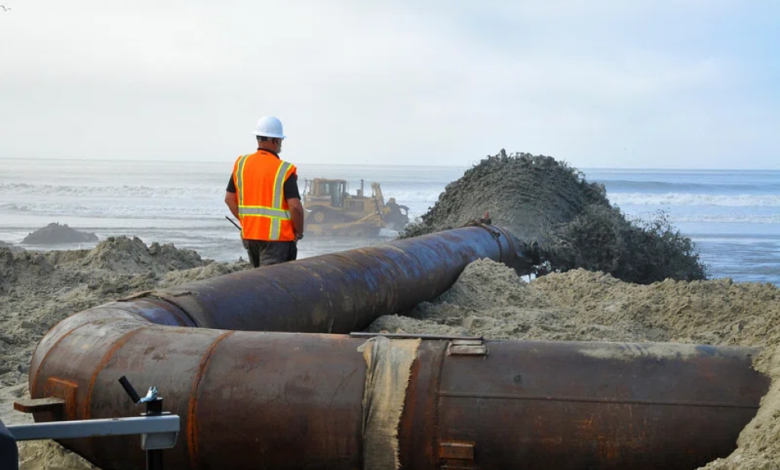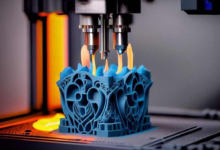Understanding How Pipeline Pigging Works: Enhancing Efficiency and Integrity

Pipeline pigging is a sophisticated and vital process used across industries to maintain and optimize the performance of pipelines. This innovative technology involves the use of specialized devices called “pigs” that travel through pipelines to perform cleaning, inspection, and maintenance tasks. In this comprehensive guide, we will explore in detail how pipeline pigging works, its key components, types of pigs, applications, benefits, challenges, and the latest advancements shaping the field.
Key Components of Pipeline Pigging:
- Pigs:
- Cleaning Pigs: Remove debris, scale, wax, and other deposits from pipeline walls.
- Inspection Pigs: Assess pipeline condition, detect defects, corrosion, or leaks.
- Specialty Pigs: Perform specific tasks like product separation, batching, or applying coatings.
- Launchers and Receivers:
- Launchers: Entry points for pigs into the pipeline.
- Receivers: Exit points for retrieving pigs from the pipeline.
- Valves and Fittings:
- Control the flow of pigs and products within the pipeline.
- Pigging Control Unit:
- Manages pigging operations, including pig launching, tracking, and retrieval.
How Pipeline Pigging Works:
- Preparation:
- Assess pipeline condition, product type, and operational requirements.
- Select the appropriate type of pig based on the task (cleaning, inspection, etc.).
- Prepare launchers, receivers, and pigging equipment.
- Pig Insertion:
- Open the launcher and insert the pig into the pipeline.
- Ensure proper alignment, sealing, and connection to maintain pressure.
- Pig Movement:
- Pigs are propelled through the pipeline by the fluid flow or a separate driving mechanism.
- They travel along the pipeline, performing their designated tasks.
- Monitoring and Data Collection:
- Use sensors, cameras, or measurement devices on inspection pigs to collect real-time data.
- Monitor pig movement, pipeline conditions, and operational parameters.
- Pig Retrieval:
- Guide the pig to the receiver or pig trap at the end of the pipeline.
- Retrieve the pig, inspect it for issues, and analyze collected data.
Types of Pipeline Pigging:
- Cleaning Pigging:
- Mechanical pigs: Use brushes, scrapers, or foam to remove deposits.
- Chemical pigs: Employ cleaning agents to dissolve or dislodge contaminants.
- Inspection Pigging:
- MFL (Magnetic Flux Leakage) pigs: Detect metal loss, corrosion, and defects.
- UT (Ultrasonic) pigs: Measure wall thickness and detect anomalies.
- Specialty Pigging:
- Batching pigs: Separate different products in multi-product pipelines.
- Gel pigs: Use gel-like substances for cleaning and maintenance.
Applications and Benefits of Pipeline Pigging:
- Efficiency: Optimize flow rates, reduce energy consumption, and minimize downtime.
- Integrity: Detect and address issues early, extending asset lifespan and reducing maintenance costs.
- Compliance: Ensure compliance with safety, environmental, and quality standards.
- Cost Savings: Long-term benefits outweigh initial investment costs, leading to overall cost savings.
Challenges and Considerations:
- Complexity: Pigging operations can be complex, requiring specialized equipment and expertise.
- Product Compatibility: Ensure pigs and pigging processes are compatible with the transported product.
- Safety: Implement safety protocols and risk assessments for personnel and equipment.
- Cost: Initial investment in pigging equipment and training may be significant.
Technological Advancements and Future Trends:
- Smart Pigging Technology: Integration of sensors, IoT connectivity, and data analytics.
- Robotics and Automation: Development of robotic pigs for autonomous operations.
- Green Solutions: Focus on eco-friendly materials and energy-efficient practices.
- Digital Twins and Predictive Analytics: Implementation of digital twin models and predictive maintenance strategies.
Conclusion:
Pipeline pigging is a critical process that enhances pipeline efficiency, integrity, and reliability. By understanding how pipeline pigging works and leveraging its benefits, organizations can optimize their operations, reduce costs, ensure regulatory compliance, and improve overall performance. Embracing technological advancements and best practices in pipeline pigging is essential for maximizing its effectiveness and contributing to efficient and sustainable pipeline operations.







